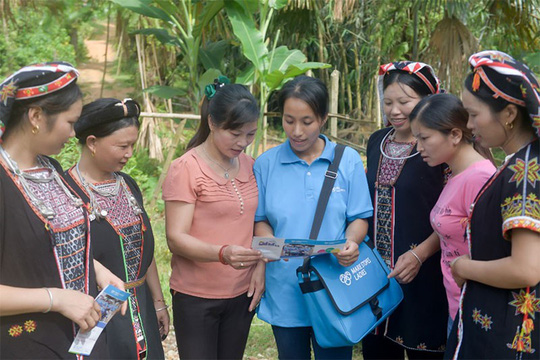Vietnam population increases by over 2,700 a day
Vietnam's population is increasing by over 2,700 people a day as authorities implemented measures to improve family planning services and gender imbalance.
In disadvantaged areas, each woman has two to three children while this rate in the cities is 1.6-1.8. Last year, Hanoi led the country in population growth with 200,000 newly born babies. Hanoi's population increased sharply in both inner city and the suburbs but mostly in newly built residential areas.
Nguyen Doan Tu, head of the General Department of Population and Family Planning, said starting from 2019, the Ministry of Health would implement measures to maintain the current replacement level fertility, deal with gender imbalance and take better care of the elderly.
In 2017, the Department of Population and Labour Statistics had reported that the gender imbalance in Vietnam was rising in recent years and differs from province to province. The sex ratio at birth rose from 108.5 to 116.1 in northern mountainous areas, Red River Delta, Central Highland and the Mekong Delta. It significantly decreased from 109.7 to 105.5 in the north central coast, central coast and the south-east region.
The natural sex ratio at birth is often considered to be around 105. This means that at birth on average, there are 105 males for every 100 females. The General Department of Population and Family Planning aims to improve average life expectancy to 73.6 and bring the sex ratio at birth to 114.
The General Department of Population and Family Planning also cooperated with non-governmental organisation Marie Stopes Vietnam to review the programme to improve access to family planning services in the 2015-2020 period.
Over 3,000 employees have been trained. 70 lecturers and 230 supervisors have been sent to 18 provinces that joined the programme. It is estimated that hundreds of unwanted pregnancy cases have been prevented every year since the programme was started.
According to the department, many women in rural areas have demand for birth control but their needs haven't been met. 42.3% of the communal health stations rarely provide intrauterine device birth control options to women while 23% lack experience and skills or equipment.

Many women in rural areas have demand for birth control
In disadvantaged areas, each woman has two to three children while this rate in the cities is 1.6-1.8. Last year, Hanoi led the country in population growth with 200,000 newly born babies. Hanoi's population increased sharply in both inner city and the suburbs but mostly in newly built residential areas.
Nguyen Doan Tu, head of the General Department of Population and Family Planning, said starting from 2019, the Ministry of Health would implement measures to maintain the current replacement level fertility, deal with gender imbalance and take better care of the elderly.
In 2017, the Department of Population and Labour Statistics had reported that the gender imbalance in Vietnam was rising in recent years and differs from province to province. The sex ratio at birth rose from 108.5 to 116.1 in northern mountainous areas, Red River Delta, Central Highland and the Mekong Delta. It significantly decreased from 109.7 to 105.5 in the north central coast, central coast and the south-east region.
The natural sex ratio at birth is often considered to be around 105. This means that at birth on average, there are 105 males for every 100 females. The General Department of Population and Family Planning aims to improve average life expectancy to 73.6 and bring the sex ratio at birth to 114.
The General Department of Population and Family Planning also cooperated with non-governmental organisation Marie Stopes Vietnam to review the programme to improve access to family planning services in the 2015-2020 period.
Over 3,000 employees have been trained. 70 lecturers and 230 supervisors have been sent to 18 provinces that joined the programme. It is estimated that hundreds of unwanted pregnancy cases have been prevented every year since the programme was started.
According to the department, many women in rural areas have demand for birth control but their needs haven't been met. 42.3% of the communal health stations rarely provide intrauterine device birth control options to women while 23% lack experience and skills or equipment.

Leave your comment on this story